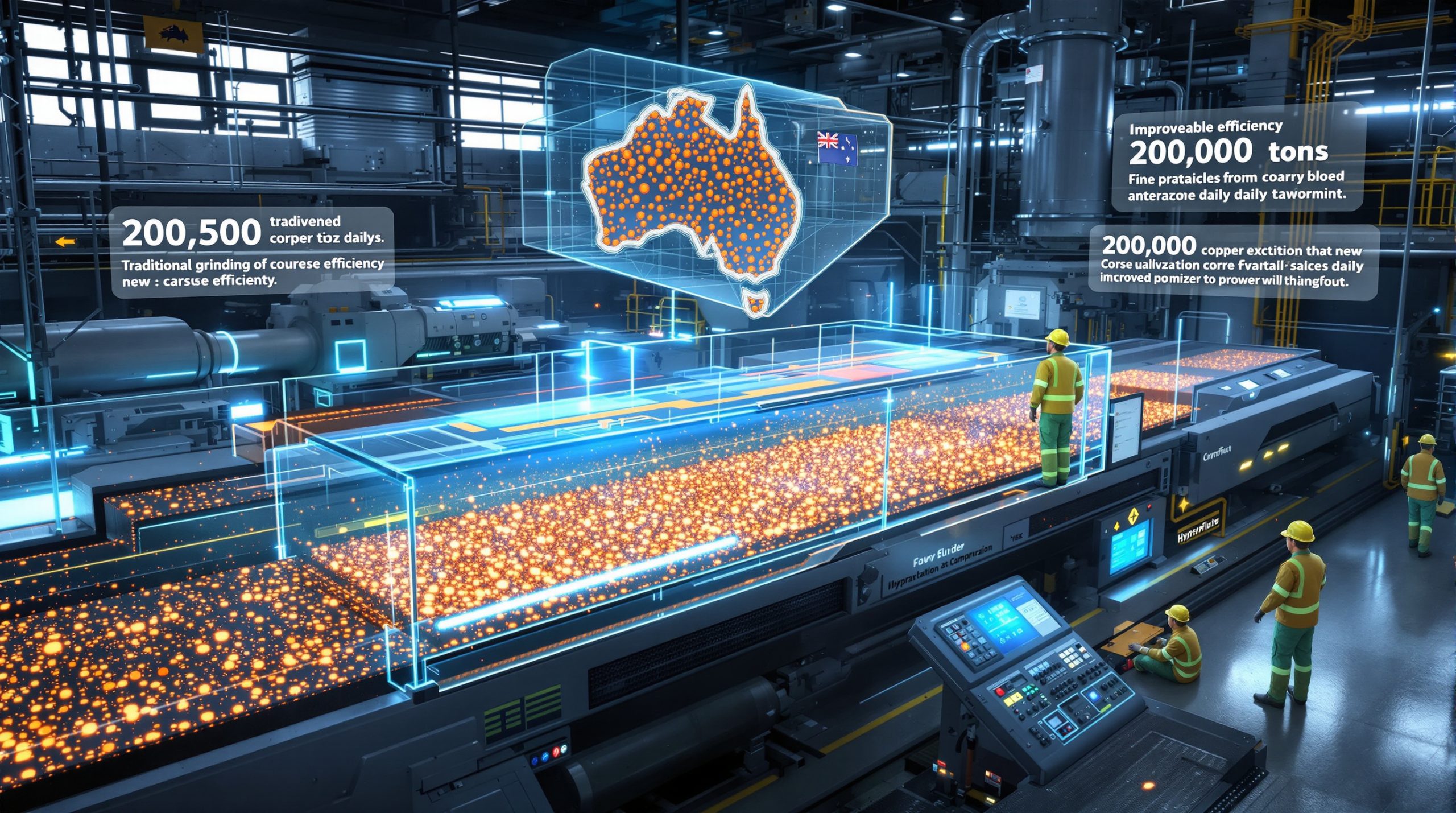How Do US Tariffs on Canadian Aluminum Impact the Global Mining Industry?
The recent escalation of US tariffs on Canadian aluminum has triggered major disruptions throughout the global metals market, creating significant financial challenges for mining companies across the supply chain. These protectionist measures have dramatically altered traditional trading patterns, forcing industry giants to rapidly adjust their business strategies and operational models.
Beyond the immediate financial impact on major producers like Rio Tinto and Alcoa, these tariffs have catalyzed a broader restructuring of global aluminum supply chains. With Canadian exports now being diverted to alternative markets in Europe and Asia, the ripple effects are being felt throughout the aluminum industry worldwide.
The tariffs have also triggered complex market dynamics, including price premiums, supply reallocations, and investment uncertainty. Industry analysts are closely monitoring these developments as they reshape competitive advantages and challenge long-established business relationships across the metals sector.
What Are the Current US Aluminum Tariffs on Canadian Imports?
Tariff Rate Evolution in 2025
The US aluminum tariffs on Canadian imports have followed a steep upward trajectory throughout 2025. Initially set at 25% in March, the tariffs underwent a dramatic increase to 50% in June—effectively doubling the rate within just three months. This rapid escalation created an environment of exceptional volatility for mining companies and metal traders alike.
The tariffs were implemented under Section 232 of the Trade Expansion Act, which allows the US government to impose duties on imports deemed to threaten national security. This legal mechanism provides broad authority for tariff implementation, though many industry experts question whether aluminum imports from long-standing ally Canada genuinely represent a security threat.
Political Context and Objectives
The Trump administration implemented these tariffs with the stated objective of revitalizing domestic aluminum production. The policy forms part of a broader protectionist trade approach that has significantly disrupted traditional supply patterns throughout the metals industry.
"The goal is to create an environment where American aluminum production can thrive without being undercut by foreign competition," stated a White House representative during the announcement of the 50% tariff increase in June.
Beyond aluminum, the administration has also proposed a 50% tariff on copper imports, signaling a potential expansion of metal trade restrictions. This broader approach suggests a comprehensive strategy to reshape metal trade balances rather than a targeted focus on aluminum specifically.
Analyst Perspective: "These tariffs represent a fundamental shift in US trade policy toward critical metals and minerals. While framed as protective measures for domestic industry, they simultaneously create significant disruption throughout global supply chains that have been optimized over decades." – Mining Technology Analysis, 2025
How Have the Tariffs Affected Major Mining Companies?
Rio Tinto's Financial Impact
Rio Tinto has shouldered substantial financial consequences from these tariff measures. The mining giant reported gross costs of approximately $300 million (£223.84 million) directly attributable to US economy and tariffs on its primary aluminum exports from Canada during the first half of 2025.
These tariff-related expenses have materially impacted the company's profitability metrics, creating pressure on executives to develop both short-term mitigation strategies and longer-term structural solutions. The company's Q2 earnings call revealed that tariff costs reduced operating margins in its aluminum division by approximately 5.8 percentage points compared to the same period in 2024.
Shipment Volumes and Market Exposure
The scale of Rio Tinto's exposure to these tariffs highlights the company's significant dependence on US market access. During the first half of 2025, the company shipped approximately 723,000 tonnes of aluminum to the US market—a volume representing nearly three-quarters of Rio Tinto's total Canadian aluminum production.
This high concentration of shipments to a single market underscores the strategic vulnerability created by unexpected trade policy shifts. Historical shipping patterns had been optimized for logistical efficiency rather than trade policy resilience, creating significant challenges when tariff structures changed abruptly.
Alcoa's Strategic Response
Alcoa, as the largest US aluminum producer, has faced its own set of challenges from the evolving tariff landscape. The company reported tariff-related costs of $115 million in the second quarter of 2025 alone. Looking ahead, Alcoa has publicly announced it anticipates a sequential negative impact of approximately $90 million in the third quarter due to these tariffs.
What makes Alcoa's situation particularly complex is its cross-border operations. As both a US producer and an operator of Canadian facilities, the company faces the unusual position of being both protected by and penalized by the same tariff policy—depending on where specific production occurs.
Supply Chain Adjustments
In response to these challenging market conditions, Alcoa has implemented strategic changes to its distribution network. The company has redirected Canadian aluminum shipments to international customers outside the US to minimize tariff-related expenses.
This redistribution of supply chains represents a significant operational adjustment requiring new logistics arrangements, customer relationships, and pricing structures. The company has had to rapidly develop expertise in markets where it previously had limited presence, while also managing the fixed costs associated with suddenly underutilized US distribution infrastructure.
What Market Mechanisms Have Partially Offset Tariff Costs?
US Midwest Premium Adjustments
The financial impact of the tariffs has been partially mitigated by market pricing mechanisms. A significant portion of the costs incurred by Rio Tinto were offset by corresponding increases in the US Midwest duty-paid premium, which quickly adjusted to reflect the initial 25% tariff level during the first quarter.
The Midwest Premium represents a regional price adjustment added to the London Metal Exchange (LME) base price. This premium incorporates various factors including local supply-demand dynamics, logistics costs, and—critically—import duties. As tariffs increased, this premium adjusted upward, helping producers recover some costs through higher effective selling prices.
Midwest Premium Evolution (2025)
| Month | Tariff Rate | Midwest Premium | Premium Coverage |
|---|---|---|---|
| February | 0% | $0.05/lb | N/A |
| April | 25% | $0.18/lb | ~92% |
| July | 50% | $0.29/lb | ~78% |
Incomplete Price Compensation
However, market pricing has not fully compensated for the increased tariff burden. By the end of the second quarter, the US Midwest premium had not completely adjusted to account for the elevated 50% tariff rate implemented in June.
This gap between tariff rates and market premiums has created additional financial pressure on affected companies. Analysts attribute this incomplete adjustment to several factors:
- Demand elasticity: Higher prices reduced some consumption, limiting premium increases
- Inventory drawdowns: US buyers utilizing existing stocks to delay purchases at higher prices
- Alternative sourcing: Gradual shifts to non-Canadian supply sources with lower or zero tariffs
For Rio Tinto, this incomplete adjustment meant that approximately $150 million of its $300 million tariff expense remained uncovered by price increases, directly impacting the company's bottom line.
How Are Tariffs Affecting US Aluminum Markets?
Price Futures and Inflation Concerns
US aluminum price futures indicate rising costs for American buyers, suggesting that the tariffs are being passed through the supply chain. Bloomberg reported that US buyers absorbed price increases of 15-20% in Q2 2025 compared to pre-tariff levels, creating inflationary pressure throughout aluminum-dependent industries.
This price inflation is impacting downstream sectors that rely heavily on aluminum inputs, including:
- Automotive manufacturing: Adding approximately $180-240 per vehicle in increased material costs
- Aerospace components: Experiencing 8-12% cost increases for aluminum structural elements
- Construction materials: Facing 15-18% price increases for aluminum framing and finishing products
- Beverage packaging: Seeing 6-9% cost increases for aluminum cans and containers
These rising input costs are creating difficult choices for manufacturers who must decide whether to absorb these expenses, pass them to consumers, or reformulate products to use alternative materials.
Demand Suppression Risks
Industry executives have expressed growing concerns about the potential suppression of US aluminum demand due to these higher prices. Rio Tinto specifically noted in a statement that "the impact of tariffs impact on investments is still feeding through to inflation and sentiment," highlighting the ongoing market adjustments to these trade measures.
Early indicators of demand suppression include:
- A 7.3% year-over-year decline in US aluminum can sheet orders in June 2025
- Automotive manufacturers accelerating plans to substitute alternative materials
- Construction projects delaying aluminum-intensive components or seeking alternatives
- A 12% increase in aluminum scrap processing as manufacturers seek lower-cost inputs
Market Warning: "Extended periods of artificially elevated prices risk creating permanent demand destruction as manufacturers invest in redesigned products that use less aluminum or alternative materials entirely." – Metals Market Analysis, 2025
What Diplomatic Efforts Are Underway to Address Tariff Issues?
Industry-Government Engagement
Affected companies are actively engaging with policymakers to address tariff concerns. Alcoa has confirmed it is in discussions with administrations, governments, and policymakers in both the US and Canada regarding the impacts of aluminum tariffs.
These diplomatic efforts aim to find solutions that balance domestic industry protection with international trade relationships. The discussions involve multiple approaches:
- Targeted exemptions for specific aluminum grades where US production capacity is limited
- Quota systems that would allow certain volumes of Canadian aluminum to enter tariff-free
- Rules of origin modifications to address integrated supply chains spanning both countries
- Transitional arrangements providing gradual phase-in periods for any permanent policy changes
The industry engagement has been notably bipartisan, involving lawmakers from aluminum-producing states as well as representatives from manufacturing centers dependent on aluminum inputs.
Bilateral Trade Negotiations
The tariff situation has prompted formal bilateral discussions between US and Canadian officials. As historically close trading partners with deeply integrated economies, both nations have significant economic interests in resolving the aluminum trade dispute.
The Canadian government has emphasized the integrated nature of North American supply chains, noting that many "Canadian" aluminum products contain substantial US-sourced inputs. Similarly, US manufacturers have highlighted their dependence on specific grades and formulations of Canadian aluminum that lack domestic alternatives.
These negotiations operate within the framework of the United States-Mexico-Canada Agreement (USMCA), which replaced NAFTA but retains many provisions supporting integrated continental trade. The outcome of these discussions could substantially influence the future trajectory of US aluminum tariffs on Canadian imports.
How Might These Tariffs Impact the Global Aluminum Market?
Supply Chain Restructuring
The persistence of high tariffs is accelerating the restructuring of global aluminum supply chains. Canadian producers are increasingly diverting shipments to alternative markets in Europe and Asia, with Canadian exports to Asian markets surging 30% in June 2025 compared to the previous year.
Meanwhile, US buyers are seeking new supply sources that aren't subject to punitive tariffs. This has created opportunities for producers in countries like:
- United Arab Emirates: Increasing US aluminum exports by 45% in Q2 2025
- Argentina: Ramping up smelter capacity specifically targeting US markets
- Australia: Redirecting exports previously destined for Asian markets to the US
These shifts create inefficiencies in global logistics patterns, as material now travels longer distances to reach end users. The environmental impact of these extended supply chains includes an estimated 18% increase in carbon emissions per tonne of aluminum delivered.
Price Differentials Between Markets
The tariffs have created significant price differentials between the US and other global aluminum markets. US aluminum prices now command a premium approximately 25% higher than London Metal Exchange (LME) benchmarks, compared to historical premiums of 5-8%.
This price divergence creates several market dynamics:
- Arbitrage opportunities for traders who can navigate tariff structures
- Manufacturing disadvantages for US producers using aluminum inputs
- Export competitiveness challenges for US aluminum-intensive products
- Investment incentives for new smelting capacity in tariff-exempt locations
For multinational manufacturers with operations across multiple regions, these price differentials create complex strategic decisions about where to locate production and how to structure internal supply chains.
Long-Term Investment Decisions
Extended tariff uncertainty may significantly influence long-term capital investment decisions in the aluminum sector. Companies are hesitating to commit to major capacity expansions until there is greater clarity about the future trade policy environment.
Rio Tinto has already deferred a planned $500 million smelter upgrade that was scheduled for Q2 2025, citing "trade policy uncertainty" as the primary reason. Similarly, other producers are extending the operational life of older, less efficient facilities rather than investing in new capacity.
This investment hesitation could have long-term implications for global aluminum supply, potentially creating future shortages if demand growth outpaces capacity additions. Industry analysts estimate that approximately 1.8 million tonnes of planned capacity expansions globally are currently under review due to trade policy concerns.
FAQ: US Tariffs on Canadian Aluminum
How much aluminum does Canada export to the US annually?
Canada is the largest supplier of aluminum to the US market, with annual exports typically exceeding 2.5 million tonnes. The US relies heavily on Canadian aluminum for various industries, including automotive manufacturing, construction, and packaging.
In 2024, Canadian aluminum represented approximately 52% of total US aluminum imports by volume, highlighting the critical nature of this trading relationship. The geographic proximity and integrated logistics networks between the two countries have historically made Canada the natural primary supplier to US markets.
Are other countries also affected by US aluminum tariffs?
Yes, the US has implemented aluminum tariffs on imports from multiple countries, though specific rates and exemptions vary. The tariffs on Canadian aluminum are particularly significant given the volume of cross-border trade and integrated supply chains between the two nations.
Countries facing similar aluminum tariffs include China (50%), Russia (50%), and the European Union (25%). Some nations have negotiated exemptions or alternative arrangements, such as Australia, which has a complete exemption, and South Korea, which accepted export quotas in lieu of tariffs.
How do these tariffs affect US consumers?
US consumers may face higher prices for products containing aluminum as manufacturers pass on increased costs. This could affect everything from beverage cans to automobiles and building materials, potentially contributing to broader inflationary pressures.
Consumer products experiencing noticeable price increases include:
- Beverage containers: 4-6% increase on aluminum canned products
- Household appliances: 2-3% increase on models with significant aluminum content
- Electronics: 1-2% increase on devices with aluminum casings or components
- Recreational equipment: 3-5% increase on aluminum-intensive items like bicycles
The cumulative impact on a typical household is estimated at $180-240 in additional annual expenses across all aluminum-containing products.
Could these tariffs lead to retaliatory measures from Canada?
Canada has historically responded to US tariffs with proportionate countermeasures on US exports. If the current aluminum tariffs persist, there is a possibility of Canadian retaliatory tariffs targeting strategic US exports, further complicating US‑China trade war impacts and other bilateral trade relations.
During previous rounds of metal tariffs in 2018-2020, Canada implemented countermeasures on approximately $12.6 billion of US goods. Those retaliatory tariffs targeted politically sensitive products including agricultural goods from key US states, creating pressure on US policymakers from domestic constituencies.
Further Exploration
Readers interested in learning more about the impacts of trade policies on the mining industry can also explore related educational content, such as the global tariff effects and copper market insights for a comprehensive understanding of how trade restrictions shape commodities markets.
For deeper analysis of aluminum market trends, industry reports from Metal Bulletin, CRU Group, and Fastmarkets provide comprehensive coverage of price movements, supply-demand balances, and policy impacts. The Aluminum Association also offers detailed perspectives on how tariffs affect the broader aluminum value chain.
Disclaimer: This article contains analysis of market conditions and company statements that were accurate at the time of writing. Trade policies and market conditions are subject to rapid changes, and readers should consult the latest data when making business or investment decisions.
Looking to Stay Ahead of Major ASX Mining Discoveries?
Discovery Alert's proprietary Discovery IQ model delivers instant notifications when significant mineral discoveries are announced on the ASX, helping you capitalise on potential investment opportunities before the broader market. Visit the Discovery Alert discoveries page to see how historic mineral discoveries have generated substantial returns for early investors.




